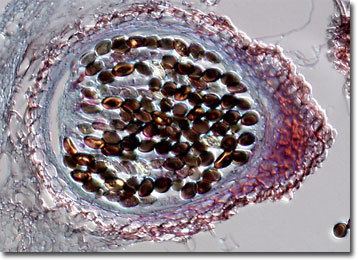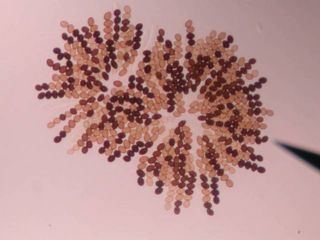Higher classification Sordaria | Scientific name Sordaria fimicola Rank Species | |
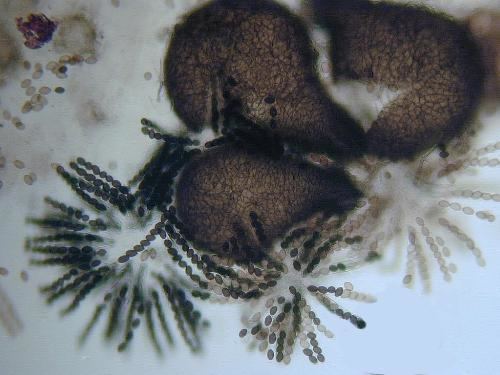 | ||
Similar Sordaria, Sordariaceae, Sordariomycetes, Podospora, Sordariales | ||
Sordaria fimicola is a species of microscopic fungus. It is commonly found in the feces of herbivores. Sordaria fimicola is often used in introductory biology and mycology labs because it is easy to grow on nutrient agar in dish cultures. The genus Sordaria, closely related to Neurospora and Podospora, is a member of the large class Sordariomycetes, or flask-fungi. The natural habitat of the three species of Sordaria that have been the principal subjects in genetic studies is dung of herbivorous animals. The species S. fimicola is common and worldwide in distribution. The species of Sordaria are similar morphologically, producing black perithecia containing asci with eight dark ascospores in a linear arrangement. These species share a number of characteristics that are advantageous for genetic studies. They all have a short life cycle, usually 7–12 days, and are easily grown in culture. Most species are self-fertile and each strain is isogenic. All kinds of mutants are easily induced and readily obtainable with particular ascospore color mutants. These visual mutants aid in tetrad analysis, especially in analysis of intragenic recombination.
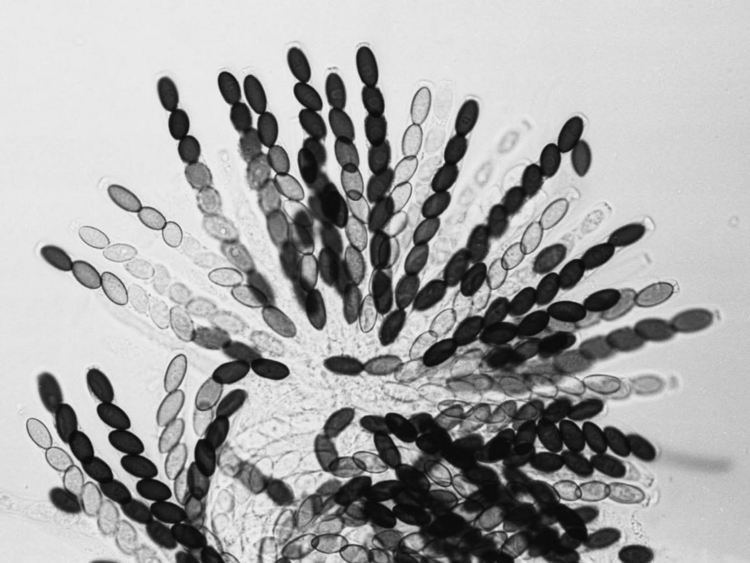
The most common form of S. fimicola is a dark brown. Certain mutants are grey or tan. A common experiment for an introductory biology lab class is to cross one of the mutant types with a wild type and observe the ratio of coloring in the offspring. This experiment illustrates the concepts of genetic inheritance in a haploid organism. The eight ascospores are produced inside an ascus. Sordaria squashes can give us information about crossing over during meiosis. If no crossing over then there is a 4:4 pattern. 4 black spores, and 4 tan spores all lined up. If crossing over does occur there is a 2:2:2:2 pattern visible, or a 2:4:2 pattern.

Another common lab use is to observe meiosis and mitosis in the fruit bodies, called perithecia. An interesting feature of S. fimicola is that its fruit body is phototrophic. Thus, as it grows the stalk will bend toward a light source and when the sac bursts, the spores are shot towards the light.
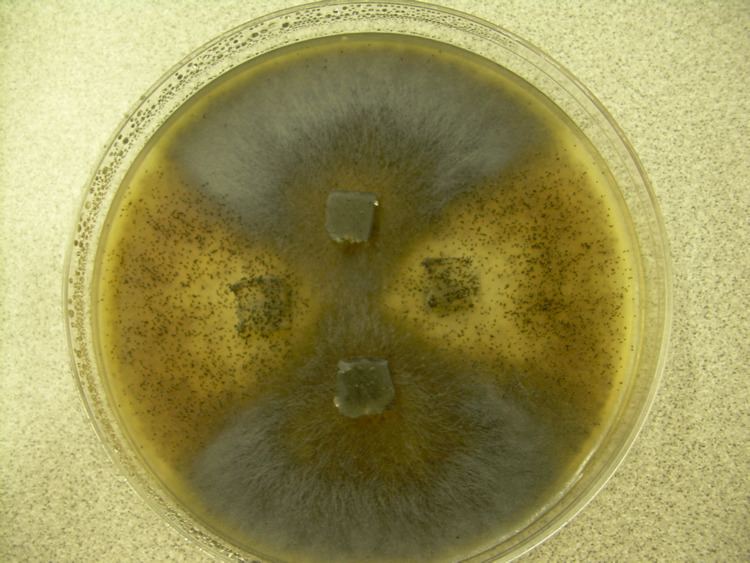
Gene conversion
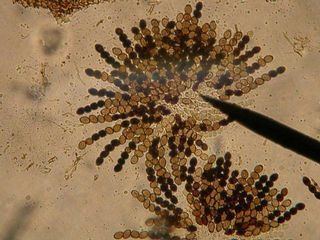
Each individual meiosis generates four haploid products, and after one further round of mitosis, eight products are formed and all retained as haploid spores within the sac-like ascus (pl. asci). The retention of the products of an individual meiosis in an individual ascus has facilitated certain kinds of genetic analyses, particularly the analysis of the molecular mechanism of genetic recombination. When a wild type (+) strain is mated with a mutant (m) strain, ordinarily each ascus will contain a pattern of four + and four m spores. However, it was found that, with low frequency, some asci had ratios that differed from the expected 4+ : 4m (e.g. 6+: 2m or 2+: 6m or even 5+: 3m or 3+: 5m). In these cases it appeared that the m gene had been converted to the + gene or vice versa. And so the phenomenon was termed "gene conversion." Gene conversion was first detected in S. fimicola in 1951 by Lindsay Olive, and definitively characterized by him in 1959. Olive considered that these gene conversion events resulted from "trans replication, by which a locus is copied more than the normal number of times during replication at meiotic prophase." Since then many studies on the gene conversion phenomenon were carried out with S. fimicola and other organisms, particularly other ascomycetes [see review by Whitehouse (1982)]. Efforts to understand gene conversion at the molecular level have provided important insights into the mechanism and adaptive function of meiotic recombination, which in turn bears on the adaptive function of sexual reproduction. These insights are discussed further in the article Gene conversion.
